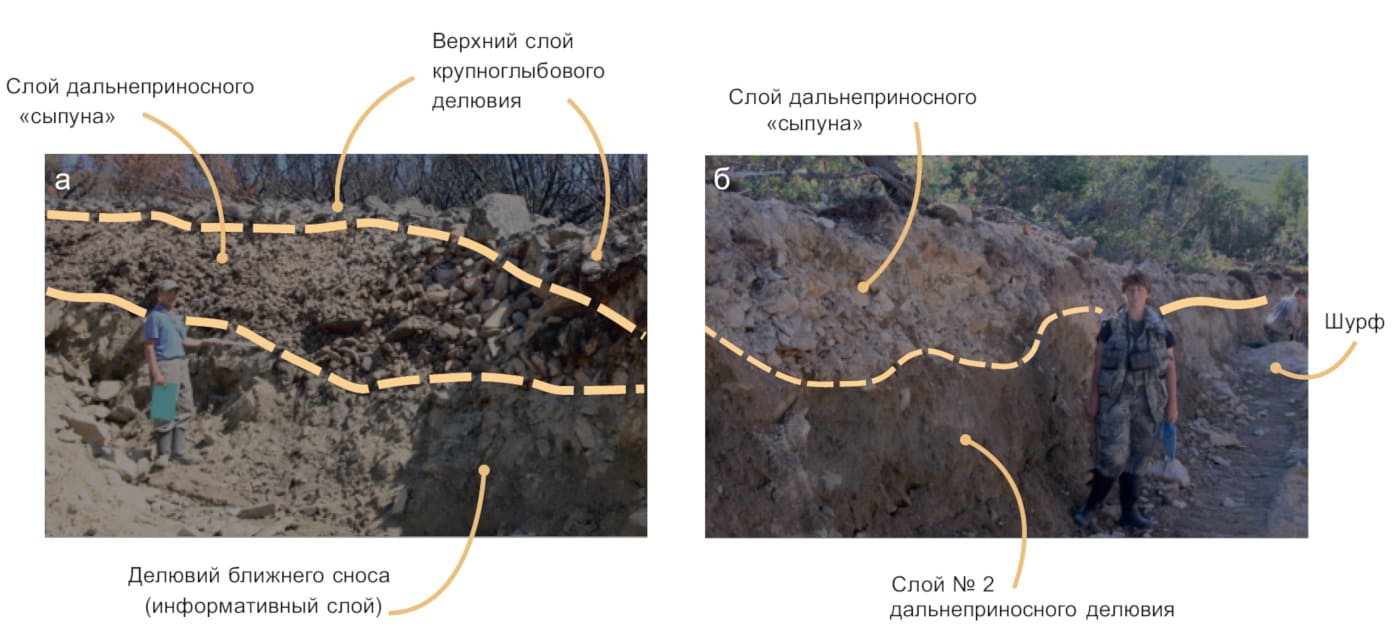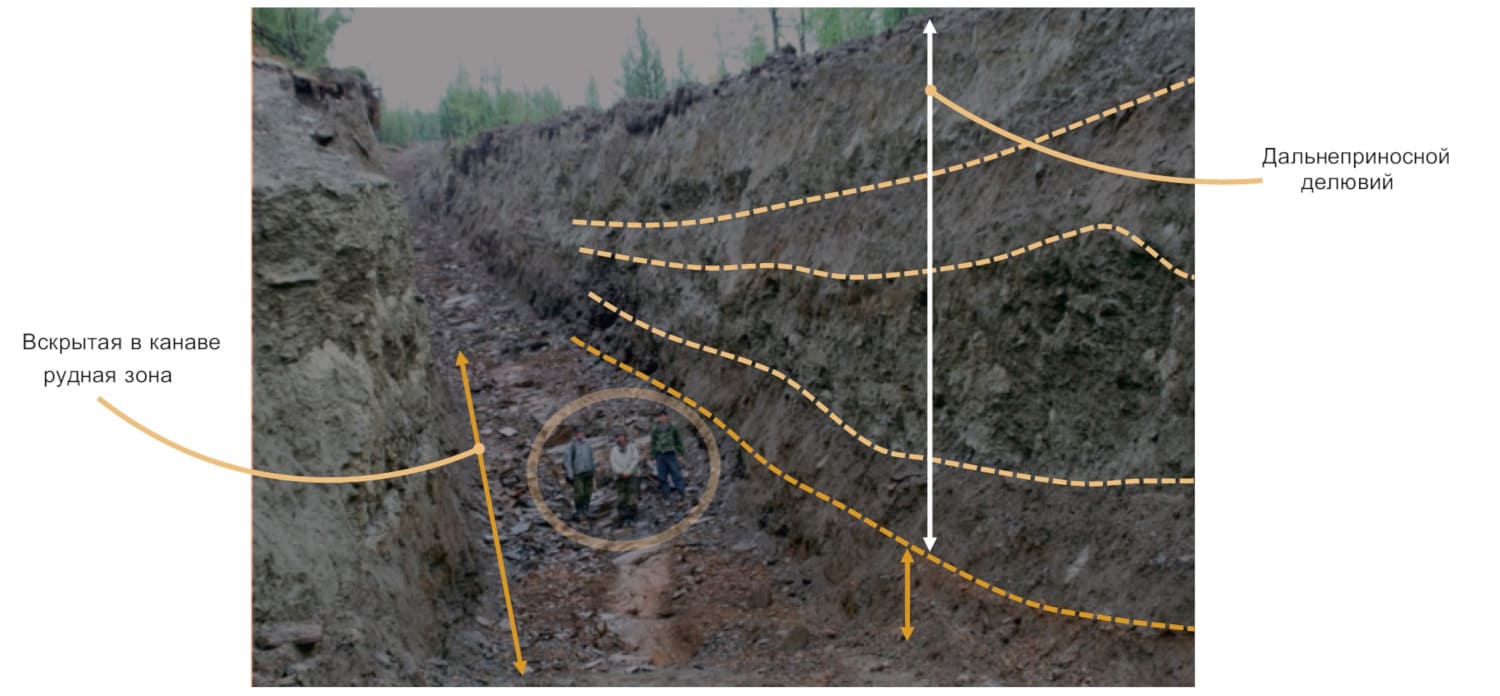EXPRESS TECHNIQUE OF GOLD DEPOSIT PROSPECTING IN COMPLEX MOUNTAIN AND TAIGA LANDSCAPES
In recent years, FSBI TsNIGRI focused on improvement and practical use of gold prospecting technique designed for complex landscapes and geology. As a result, new mineral occurrences were found and prospects were localized to continue geological prospecting within “concealed” areas where no gold mineralization has been previously revealed by conventional methods.
Complex mountain and taiga landscapes are typical of the Russian folded regions such as Yenisei, Baikal-Patom, Verkhoyansk-Kolyma, Aldan gold provinces (most part of them). Landscapes are represented by both thick permafrost moss and humus/turf layers and deluvial stone streams overlying the informative (primary) deluvium layer by far-supplied deluvial deposits.
AREAS OF STONE STREAM EVOLUTION
TYPICAL SECTION OF DELUVIAL DEPOSITS WITHIN AREAS OVERLAIN BY STONE STREAM (a) AND OVERGROWN WITH CEDAR ELFIN WOOD (b)

Figure A shows a layer of far-supplied sand with well-rounded rock fragments. Figure Б shows the 2nd layer of far-supplied deluvium with sandy-argillaceous fraction (4m deep pit shown in the figure only opened this far-supplied deluvium with rounded fragments).
SLOPE DEPOSITS DISPLAYING MULTILAYER STRUCTURE OF FAR-SUPPLIED DELUVIAL AND DELUVIAL-SOLIFLUCTIONAL DEPOSITS (BODAIBO ORE DISTRICT)

Metallogenic analysis of geological-geophysical and geochemical data performed to identify prospective local areas should consider that negative results of previous ore deposit prospecting within some areas could be mostly attributed to poor area, primarily ore zone, exposure.Data analysis for local areas results in ore-bearing structure identification to be verified.
Prospecting. Prospecting technique is based on well-established deluvial-eluvial deposit study methods to prospect for metallic and nonmetallic (gold, cassiterite, wolframite, tantalite-niobate, etc.) deposits characterized in many textbooks and methodical manuals.
These are most express methods: fragmental (deluvial orebody delineation), mineral concentrate (mineralogical+mineralogical/geochemical) and lithochemical.
However, their use required profile or areal exposure of deluvial deposits for their study and informative layer opening; pits and holes were sunk for this purpose.
Prospecting. Stage 1: 1 m (or deeper) pit sinking in eluvial and deluvial deposits, sampling operations (concentrate, precision and lithochemical by primary and secondary dispersion haloes); trenching (up to 1 m or deeper) in forested, turf-covered, swamped, stone stream-covered slopes and watersheds followed by pit sinking in mineralization intervals and sampling operations to localize contrast concentrate and lithochemical haloes to be trenched later. For this reason, the first study stage does not require pit and trench sinking to primary rocks which makes prospecting much faster and cheaper.
Prospecting. Stage 2. To localize epicenters of concentrate and geochemical haloes, pits are sunk to primary rocks, sampling operations are employed. If deluvial-solifluctional deposits are over 4-6 m thick and their upper layers suitable for pit testing are represented by far-supplied rocks, air percussion, churn and other drilling methods as well as concentrate, lithochemical and other sampling procedures are used to study lower layers and localize mineralized zones in primary rocks.
Prospecting. Stage 3. The identified halo epicenters are opened by trenches, mineralized or ore zones are traced by trenches (along the strike) and core drillholes (to depth) combined with appropriate standard sampling operations.